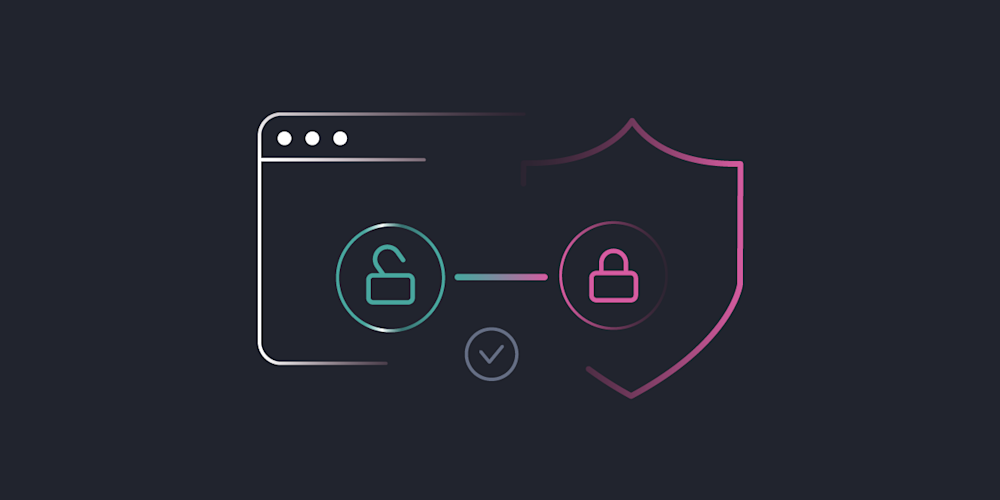
What is Access Control?
Access control is a cybersecurity mechanism that determines whether a requesting party — be it a user, device, API, or application — can access a resource or conduct an action. It consists of two foundational processes: authentication (verifying identity) and authorization (granting privileges based on identity and context). Together, they form the backbone of access control security.
Modern systems contain sensitive data and personally identifiable information (PII), so it's essential to implement access control methods that restrict unauthorized access and enforce compliance. Whether you're managing cloud environments, APIs, or legacy enterprise databases, robust access control solutions are critical for protecting confidentiality, integrity, and availability (CIA).
Types of Access Control
There are several types of access control in security, each suited to different use cases. Let's break them down by category:
Authentication and Access Control
Authentication methods confirm identity using multiple factors. Security professionals tend to group these into three core areas:
Something you know (password or PIN)
Something you have (OTP or hardware token)
Something you are (biometric data)
Common technologies include passkeys, one-time passwords (OTP), FIDO-based authenticators, and apps like Google Authenticator. Multi-factor authentication (MFA) uses two or more of these for stronger protection.
Authorization and Access Control
Authorization mechanisms determine what a verified user or system can do. There are three primary types:
Role-based access control (RBAC): Users are grouped by job function, and permissions are assigned based on roles. For example, admins, developers, and read-only users each have distinct access scopes. This is common in API access control and enterprise apps.
Attribute-based access control (ABAC): Permissions are based on user, resource, or environment attributes. For example, users over a certain age can access age-restricted content, or employees in a specific department can view internal reports.
Policy-based access control (PBAC): Access decisions are based on conditional, context-aware rules such as time of day, IP address, device, or location. PBAC often builds on ABAC by using policy engines to evaluate complex rules across many attributes.
These access control methods can be layered and combined for more dynamic and granular authorization.
Systems That Use Access Control
Many systems actively utilize access control to enhance their security posture. For instance, enterprise software relies on application access control to guard against external threats and insider misuse. In distributed environments, API access control ensures only trusted clients and services can retrieve or modify data, especially across microservices.
Industries like healthcare and finance are legally required to implement strict access control policies. Regulations such as HIPAA and GDPR demand that systems restrict access to authorized individuals, log activity, and enforce data minimization. In these contexts, authentication and access control are not optional — they're vital for meeting audit and compliance standards.
Modern access control solutions are often integrated into API gateways, identity and access management (IAM) platforms, and customer identity and access management (CIAM) systems. These technologies support employees, customers, and partners by granting different roles and permission scopes. For developers, managing access through centralized policies also simplifies implementation across teams and services.
The Benefits of Quality Access Control
Access control is critical for protecting systems from unauthorized access and abuse. Broken authentication is quite commonplace, and hackers continually scan to detect and exploit such gaps. Proper access control reduces the risk of unnecessary overexposure, which could result in legal consequences and financial losses.
It also helps enforce the principle of least privilege, ensuring that users and services have access only to what they require. This limits overexposure, improves system efficiency, and supports more secure defaults. As a result, organizations can reduce unnecessary data sharing and build leaner, more manageable systems.
Lastly, having a standard, decoupled access control mechanism benefits developers greatly. Instead of having to build their own authentication, authorization, and IAM solutions for each project, teams can rely on consistent, reusable policies. This streamlines development and supports a scalable approach to access management across the organization.
Implementing Access Control
Access control is typically implemented through a combination of identity standards and security protocols. Many organizations use IAM platforms to authenticate users, issue tokens, and manage authorization. These platforms often integrate with legacy identity systems like Microsoft Active Directory, LDAP directories, or SAML-based providers, as well as modern frameworks like OpenID Connect.
At runtime, a user or machine receives a token (usually a JSON Web Token (JWT)) from an authorization server. This token defines the scopes and claims associated with the request, which downstream systems use to enforce access decisions. These flows are typically based on OAuth 2.0, which provides flexible methods for securing APIs and applications.
In a token-based architecture, identity systems must validate tokens carefully to check their signature, issuer, and expiration to avoid misused or spoofed credentials. Organizations may also use Open Policy Agent (OPA) or similar tools to define access rules as code, enabling automated policy enforcement. Effective access control depends on these layered components working together to verify identity and apply consistent rules.
The Future of Access Control
Access control continues to evolve alongside trends in identity and security. For example, decentralized identity frameworks are emerging, enabling users to manage credentials independently while still supporting secure verification. These models use verifiable credentials stored in digital wallets.
As cloud adoption grows, access control solutions must also account for sovereign cloud requirements and data residency laws. This means adapting policies dynamically based on location, jurisdiction, or regional infrastructure.
However, as access control expands in complexity, organizations must also consider user experience. Access control must balance security with usability through streamlined login flows, delegated consent, and contextual prompts.
Access control is also expanding to include non-human actors. From bots and scripts to AI agents and IoT devices, systems must now manage credentials for machine entities. As all these interactions scale, security and access control will be key to managing complexity while maintaining trust across heterogeneous systems that involve various requesting parties.




